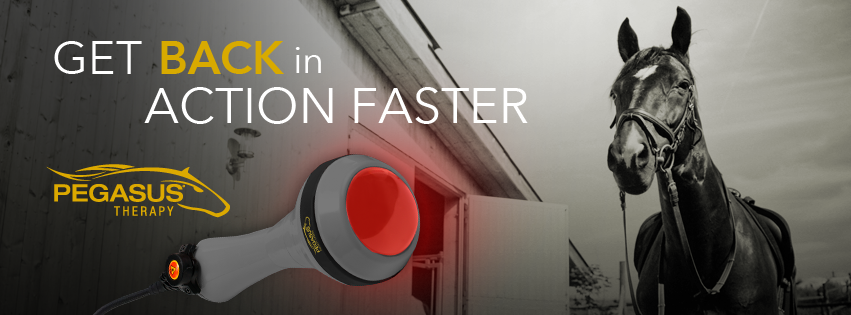Whatever You Required to Understand About Equine Therapy for Mental Wellness
Whatever You Required to Understand About Equine Therapy for Mental Wellness
Blog Article
Evaluating the Efficiency of Laser Treatment in Equine Therapy for Injury Recovery
The assessment of laser treatment's effectiveness in equine injury recovery rests on several factors, consisting of recuperation time, pain reduction, and cells regeneration. Medical researches recommend significant improvements in conditions like tendonitis and osteoarthritis, connected to boosted cellular function and elevated ATP production. Vets regularly observe superior outcomes with laser therapy contrasted to standard approaches, placing it as an important component in equine treatment. Nonetheless, the necessity for continuous monitoring and personalized therapy strategies can not be overemphasized. What specific medical evidence supports these claims, and how do veterinarians execute these procedures in method?
Understanding Laser Treatment
Laser treatment has actually ended up being a critical tool in vet medication, especially in the treatment of equine problems. Recognized for its non-invasive nature and effectiveness, laser therapy entails the application of details wavelengths of light to promote tissue repair and lower swelling. This therapeutic modality is significantly favored for its ability to increase the healing procedure in equines experiencing from a variety of bone and joint injuries and chronic problems.
The main mechanism behind laser therapy is its capacity to enhance mobile functions. When laser light permeates the skin, it is soaked up by mitochondria, the powerhouse of cells, which causes increased production of adenosine triphosphate (ATP) This biochemical power boost assists in mobile repair and regrowth. In addition, laser therapy promotes vasodilation, boosting blood circulation and oxygen delivery to broken cells, thus speeding up recuperation.
In equine medication, laser therapy is particularly useful for problems such as tendonitis, osteo arthritis, and injury healing. The technique is lauded for its pain-relieving properties, allowing horses to restore wheelchair and feature a lot more swiftly. Vets additionally value its marginal side results contrasted to various other therapy methods, making it a dependable and safe choice for equine care.

Exactly How Laser Therapy Works

Upon absorption, these photons trigger a collection of biochemical changes, enhancing mitochondrial feature and resulting in increased adenosine triphosphate (ATP) manufacturing. This increase in ATP accelerates mobile metabolic process, promoting cells repair work and regeneration. In addition, laser therapy regulates inflammatory reactions by affecting cytokine degrees and decreasing oxidative stress and anxiety, consequently reducing discomfort and swelling.
One more substantial element of laser treatment is its function in enhancing microcirculation. The therapy advertises vasodilation, enhancing blood circulation and oxygen shipment to broken tissues (Equine Therapy). This promotes the removal of mobile debris and sustains the spreading of fibroblasts and collagen synthesis, important for injury healing
Professional Evidence
The efficacy of laser therapy in equine treatment has been validated with different scientific researches, showcasing its healing possible throughout a variety of problems. A research study carried out by Turner et al. (2012) demonstrated that equines treated with low-level laser therapy (LLLT) for tendon injuries exhibited accelerated recovery contrasted to those obtaining standard therapies.
Likewise, research by Johnson and associates (2015) focused on equine muscular tissue injuries, exposing that laser treatment this article considerably expedited muscle mass fiber regeneration and minimized muscle tightness. Clinical evaluations have shown that laser treatment can minimize persistent conditions such as osteo arthritis.
Vet Insights

Vets likewise appreciate the flexibility of laser therapy. She aims out that laser treatment can be customized to the certain requirements of each horse, ensuring optimum results.
Additionally, veterinarians value the capacity to incorporate laser therapy with other therapy techniques. This multimodal approach can boost general treatment efficiency, supplying a detailed service for equine recovery. Such recommendations from seasoned specialists highlight the growing approval and application of laser therapy in equine medication.
Practical Considerations
A key element of executing laser treatment in equine treatment entails comprehending the practical factors to consider that ensure its efficiency and safety. It is critical go to this web-site to choose the ideal laser gadget, as numerous types vary in wavelength, power, and infiltration depth. Vets must be skilled in these criteria to tailor therapy methods efficiently per injury type
Furthermore, the regularity and duration of laser therapy sessions require mindful planning to make best use of therapeutic advantages while decreasing any prospective damaging effects. Constant surveillance of the horse's reaction to therapy can lead necessary adjustments in the therapy program. Developing a secure and controlled other environment during treatments is likewise vital to prevent unintentional exposure to laser discharges, which can damage both the steed and the trainer.
Training and certification of personnel administering laser therapy are critical to make sure appropriate strategy and to promote safety and security criteria. Additionally, maintaining accurate documents of each session, consisting of laser setups and observed end results, is essential for reviewing the total performance of the therapy and for making data-driven choices.
Final Thought
Laser therapy has become an effective modality in equine injury recovery, supplying significant advantages in healing time, pain relief, and tissue recovery. Scientific research studies highlight significant improvements in problems such as tendonitis and osteo arthritis, credited to improved cellular feature and boosted ATP production. Veterinarian monitorings support these searchings for, highlighting exceptional outcomes contrasted to standard therapies. For optimum outcomes, continuous monitoring and customized treatment protocols continue to be necessary in leveraging the full possibility of laser treatment in equine care.
Report this page